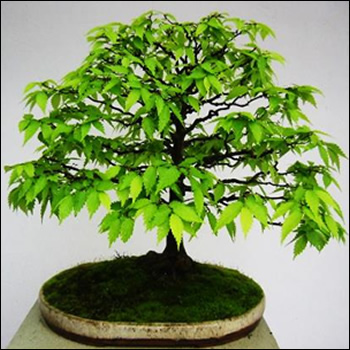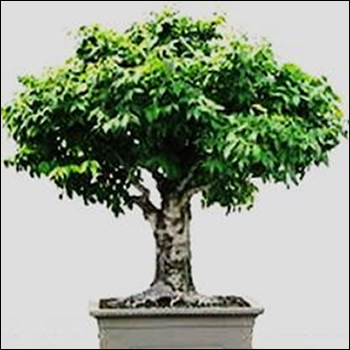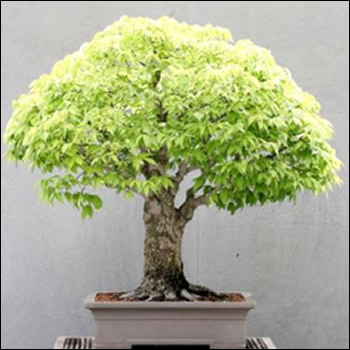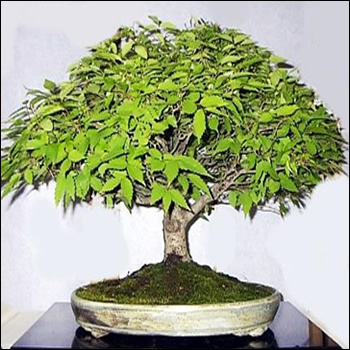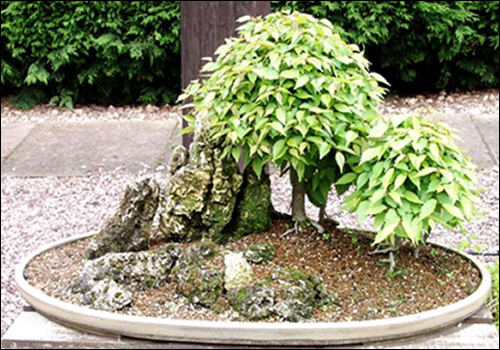Zelkova serrata is a medium-sized deciduous tree usually growing to 30 m. It is has a short trunk dividing into many upright and erect spreading stems forming a round-topped apex. The tree grows rapidly when young although the growth rate slows to medium as it develops.
It has alternately arranged leaves growing to 5 cm long and broad. The leaves themselves are simple and ovate with serrated or crenate margins, to which the tree owes its name ‘serrata’; they contain 8 - 14 pairs of veins. These leaves are rough on top and smooth on the underside. They are green to dark green in spring and throughout the summer, changing to yellows, oranges and reds in autumn.
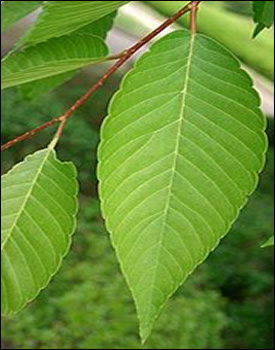
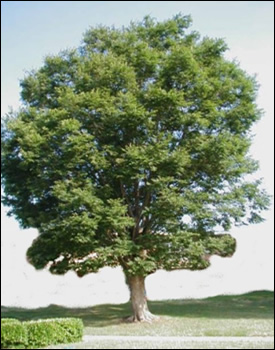
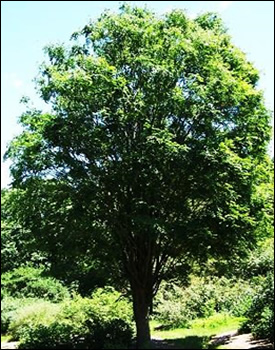
Zelkova as bonsai
Position: The Japanese grey bark elm likes full sun during the growing season. In winter the grey bark elm should be protected from frost, especially when in a shallow bonsai container. A cold frost-free greenhouse, garage or shed is a good winter place for the zelkova.
Water the zelkova regularly; do not let the root-ball dry out, but do not overwater; overwatering can lead to root rot. In winter keep the root ball just moist. Avoid using chalky water as it leaves a deposit on the leaves which, because of their rough character, is hard to remove.
Feed regularly in the growing season. Use a fertilizer with a balanced N-P-K ratio.
Prune: Let new shoots grow until they have produced six leaves and then cut them back to 2 leaves. After the leaves have fallen, carefully remove thick twigs and overly long shoots. The winter silhouette should show fine ramification; this is an important feature of the Japanese grey-bark. It is also important to have a scarless trunk and a perfect nebari. Young zelkovas can be defoliated in June in order to promote ramification. Older trees can be partially defoliated by removing the larger leaves in order to let more light reach the smaller leaves inside the crown.
Wire during autumn, winter or spring before the buds open. Young twigs often grow crooked and messy and must be corrected to produce a perfect broom style winter silhouette. In Japan they tie together the twigs and branches of young specimens to promote the broom shape. In spring, before the buds open, the wire or string is removed.
Repot the zelkova every two or three years, pruning the roots carefully. Zelkovas are usually planted in shallow oval or rectangular pots. Zelkova is little bothered by pests and diseases. Aphids, leafhoppers, gall mites, spider mites or leaf spots can occur in rare cases; if they appear use pesticide and check the growing conditions
